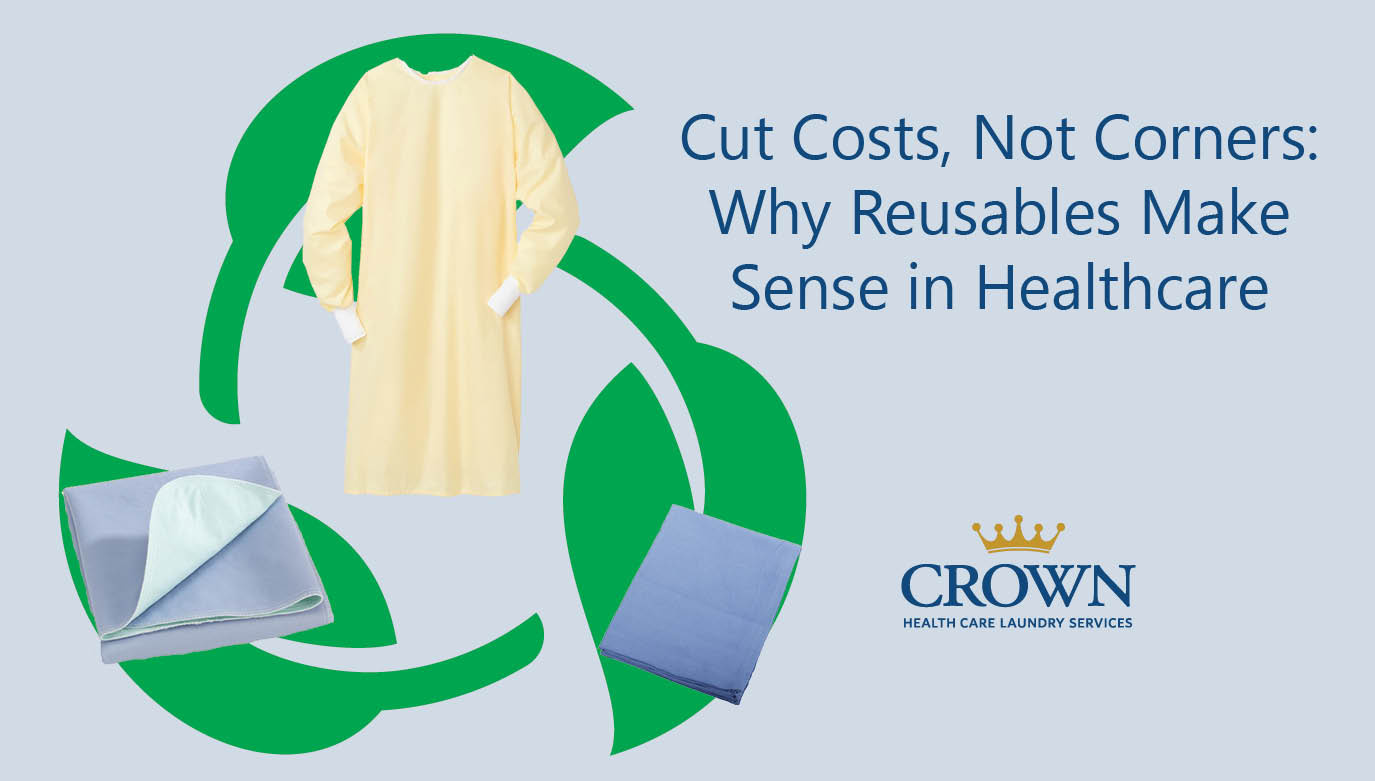
Cut Costs, Not Corners: Why Reusables Make Sense in Healthcare
Hospitals and outpatient facilities are under greater pressure than ever to deliver exceptional patient care while maintaining a focus on budget, safety protocols, and sustainability. That’s why more healthcare providers are rethinking disposables and making the switch to reusable personal protective equipment, underpads and operating room linens.
While reusable healthcare textiles currently account for only 10% of the U.S. market, a growing body of research suggests that this number should be significantly higher. The data is clear: switching to reusable items can save money, reduce waste, and even improve performance.
Big Savings, Small Footprint
- Hospitals that adopt reusable isolation gowns and surgical linens have reported up to 50% cost savings, according to a comparative life-cycle analysis by TRSA. Some facilities have achieved even greater savings, up to 90% in certain departments.
- Reusable isolation gowns alone reduce costs by 52% compared to disposables while offering equal or better protection, according to the National Academies of Sciences, Engineering and Medicine.
- Reusable underpads and OR linens, which are built to withstand dozens of laundering cycles, also deliver long-term savings. When costs per use are calculated, these items routinely outperform single-use versions.
- In addition to reducing supply costs, healthcare facilities that adopt reusable products benefit from lower landfill and medical waste disposal fees, which continue to rise as regulatory pressures and environmental concerns intensify.
A More Reliable Supply Chain
During the COVID-19 pandemic, many hospitals faced critical PPE shortages due to global supply chain disruptions. Disposable PPE couldn’t arrive fast enough—and when it did, it often came at a premium.
By contrast, reusable PPE, underpads and surgical linens rely on domestic laundry infrastructure. According to NASEM, this strengthens emergency preparedness and mitigates supply chain risks by leveraging regional service partners. When facilities partner with a provider like Crown Health Care Laundry Services, they gain more than just linens; they gain a resilient partner with a dependable, domestic supply chain.
Safety You Can Trust
There’s a common myth that reusable means less clean. The truth is, it’s just the opposite. Studies published in the American Journal of Infection Control have shown that reusable gowns often outperform disposable ones in terms of liquid barrier protection, a key metric for infection prevention.
When processed through Hygienically Clean Certified facilities like Crown’s, reusable items—including PPE, underpads and OR linens—meet strict cleanliness standards proven to reduce microbial content to negligible levels. Many hospitals using Crown’s reusable textiles report high satisfaction among staff, infection prevention teams and patients, who benefit from better comfort and consistent quality.
A Win for the Environment, Too
The environmental case is just as strong. The U.S. healthcare system generates an estimated 15,000 tons of disposable PPE waste each day. That’s 44 million items daily. According to the National Academies of Sciences, Engineering and Medicine, switching to reusable PPE can:
- Reduce solid waste by up to 99%
- Lower greenhouse gas emissions by 30%
- Use 28% less energy and 41% less water over the life cycle
Crown Makes It Easy
Whether you're implementing reusable PPE, underpads or OR linens, Crown Health Care Laundry Services provides everything needed to make the transition seamless:
- Certified hygienic laundering processes
- Consistent delivery schedules
- Linen utilization data
- Personalized service from local teams
Ready to take the next step? Contact your Crown service representative or email us at contactus@crownlaundry.com.
Read more:
TRSA (2014) Comparative Life Cycle Assessment of Reusable vs. Disposable Textiles
AJIC (2018) Reusable PPE and Liquid Barrier Performance
NASEM (2024) Reusable Health Care Textiles for Use in Personal Protective Equipment
AJIC (2021) Disposable vs. Reusable Medical Gowns: A Performance Comparison